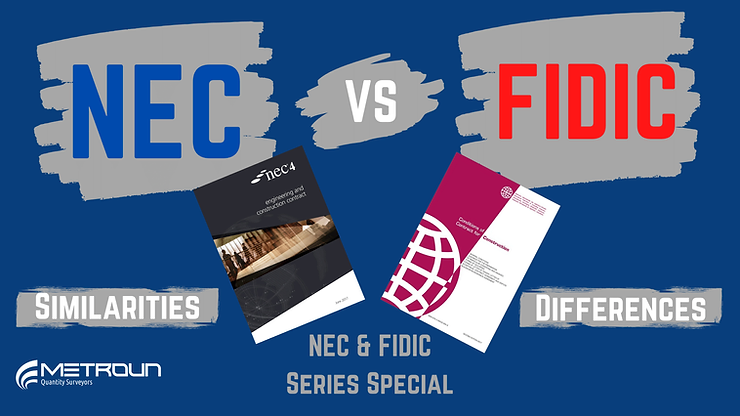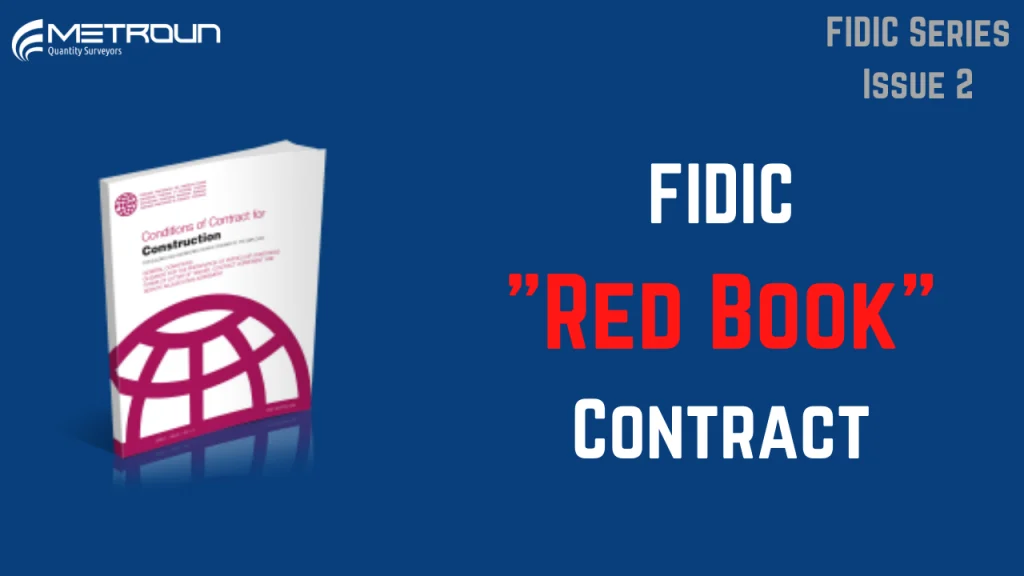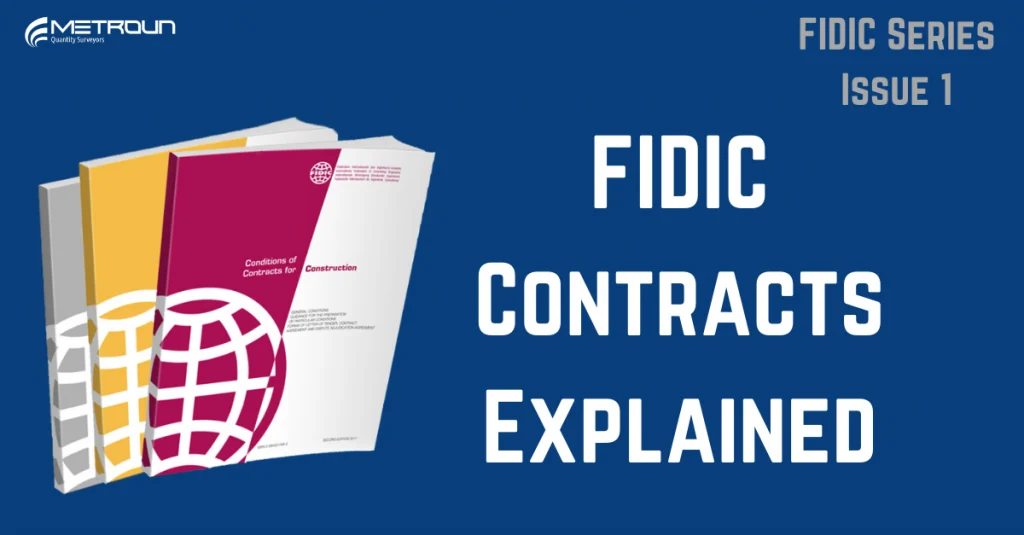Yellow Book Explained | FIDIC Contracts

In the UK, JCT contracts are the most commonly used within the construction industry, with the NEC form of contracts
FIDIC Golden Principles (2019) Explained

In the intricate world of construction projects, the foundation of a successful venture lies in the clarity, fairness, and balance
NEC vs FIDIC | Similarities and Differences

Two of the most commonly used international construction contracts are NEC and FIDIC. In this article we are going to
Advantages of FIDIC

FIDIC is one of the most, if not the most used construction contract around the world, with it being used in the Americas, Europe, Africa & Asia. Sure, there are other standard forms of contract available, but FIDIC is one of the oldest and is still as popular today as it was a century ago. This video is going to take a look at some of the biggest advantages of the FIDICcontract with a view to explaining its popularity. Firstly, the FIDIC contract comes in many forms and variations to cover a huge number of different types of construction project – for a more in-depth view on the different types why not take a look at our ‘FIDIC Contracts Explained’ blog. FIDIC contracts are a whole suite of model contracts which have been developed over more than 70 years by the International Federation of Consulting Engineers (“FIDIC”). Some great benefits of the FIDIC contract are: · That it can be used for all kinds of construction and plant installation projects, such as infrastructure, real estate, high rise buildings, factories, and roads · Can be used by both the Public & Private sectors · The different types of contracts that FIDIC produce can be easily identified by their uniquesystem of attributing a different colour to each one, such as the red book, green book, yellow book, white book, silver book & gold book, etc. · Each type has been purposely written and adapted for a certain type of project so will cover the vital needs and concerns for the parties involved · The specific attributes of a construction project will determine which of the FIDIC base contracts to use such as, the nature and size of the project, the purpose of the contract, and whether the contract is between the client and the contractor or between the contractor and asub-contractor for example · The Contracts are very clear, detailed and easy to understand. This simplicity aids in promoting best practice in the industry therefore, eliminating common issues and concerns. This further helps to reduce the risk of any disputes arising out of the projects where a FIDIC contract is used · The extreme detail of the contracts covers issues which may not yet be covered by the law & regulations of a particular country. Again, this helps to eliminate any potential disputes · Last but not least, FIDIC has been written to be fair to both parties within a construction contract and make a very conscious effort to not favour one over the other. Consequently, both the client and contractor, or contractor and sub-contractor feel protected and safe entering into a FIDIC contract together As you can see, FIDIC certainly provide a lot of benefits so it’s easy to understand why it’s many peoples first choice when deciding on a construction contract. However, there are otheroptions of construction contracts which provide similar and different benefits to a project, which we will cover in future videos and blog posts.
The FIDIC “Red Book” Contract

In the UK, JCT contracts are the most commonly used within the construction industry with the NEC form of contracts
FIDIC Contracts Explained

FIDIC in FIDIC Contracts is a French acronym for Fédération Internationale des Ingénieurs-Conseil. In English, it translates to the International


